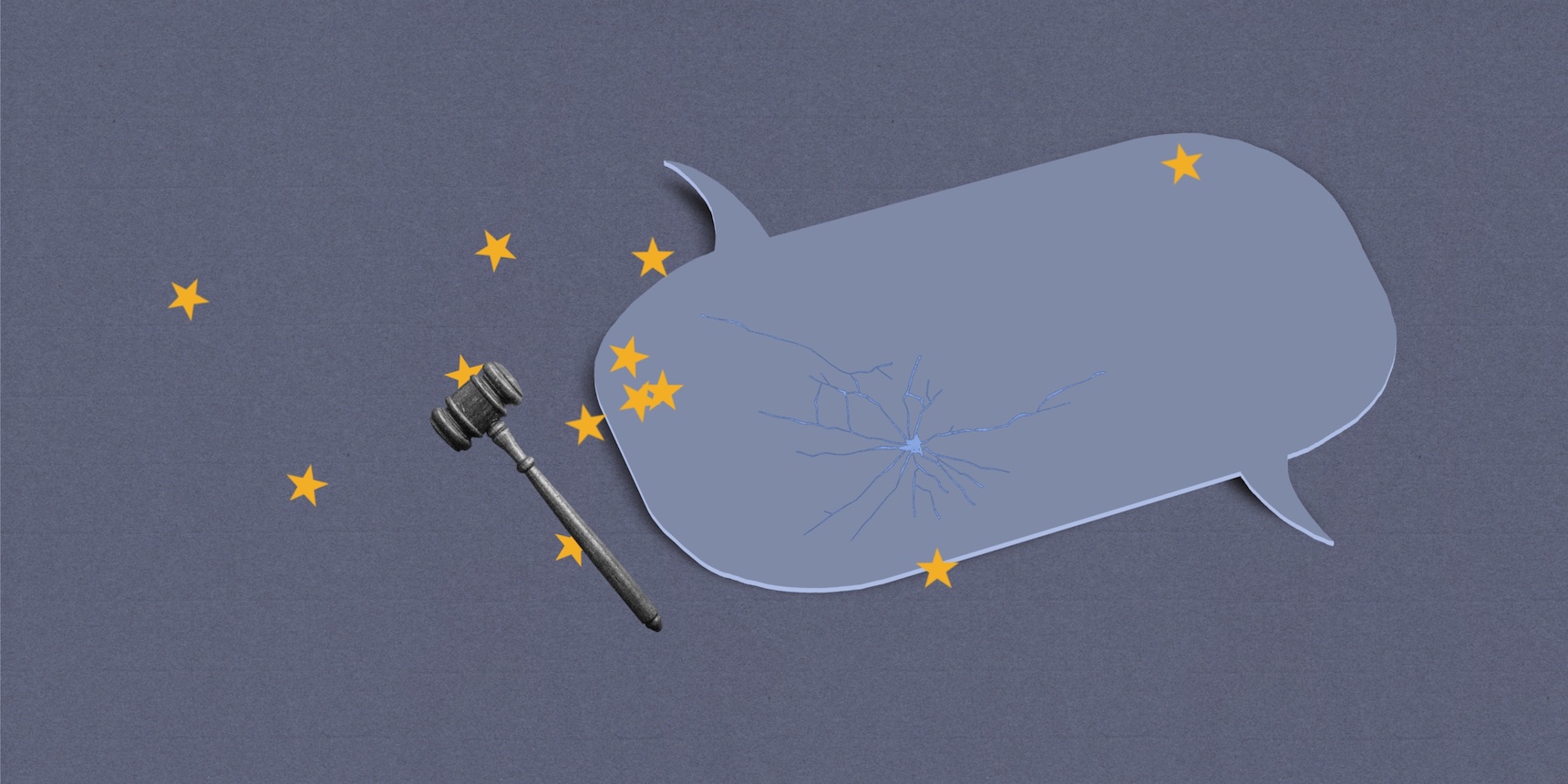
Introduction
On September 30, 2023, Azerbaijan completed the long-planned ethnic cleansing of Nagorno-Karabakh (Artsakh) by forcing out Armenians, the indigenous population with a history of over 3000 years. This process was carried out gradually over the course of three years. Armenians were subjected to a large-scale war in 2020, systematic violations of the ceasefire regime and creeping military advances following the conclusion of the statement that ended the hostilities. Starting from December 2022, a ten-month blockade was imposed, including three months of deliberate total siege starving the population, weaponization of essential resources like gas, electricity and humanitarian aid. The final stage involved a one-day military offensive resulting in over 200 casualties, and the establishment of Azerbaijani military control up to the outskirts of Stepanakert, the capital of Nagorno-Karabakh. Eventually, the resilience of Nagorno-Karabakh Armenians broke in face of the existential threat, and more than 100,000 of them –– 99% of the population –– fled to Armenia within four days. Stepanakert, once a vibrant town before the blockade, now resembles the ghost-city of Varosha in Famagusta, Northern Cyprus after it came under Turkish control in 1974.
Scenarios Carried Out by Azerbaijan and Parallels With Other Conflicts
As I posited in earlier articles, Baku was weaponizing all possible tools to push Artsakh towards one of the potential scenarios of ethnic cleansing. These predictions have largely been borne out with some adjustments:
- The scenario of the 1940-1944 evacuation of Finnish Karelia upon the demand of the Soviet Russia: Azerbaijan’s President Ilham Aliyev’s regime had been making it clear at least since January 2023 that if Armenians don’t want to become Azerbaijanis, then they should leave. Aliyev eventually achieved this objective, using a range of other tools.
- The scenario of the Srebrenica siege: Both Srebrenica and Nagorno-Karabakh were enclaves subjected to prolonged blockades leading to deliberate starvation, followed by a military offensive. According to the directive by the Main staff of the Army of Republica Srpska from July 9, 1995, “The President of the Republic is satisfied with the results of combat operations around Srebrenica and has agreed with the continuation of operations for the takeover of Srebrenica, disarming of Muslim terrorist gangs and complete demilitarization of the Srebrenica enclave”. Serbian military commanders convinced Dutch peacekeepers not to intervene, persuaded the local defense force to disarm, provided the civilian population with buses to transport them and assured them safety and provision of basic supplies.
Similarly, Azerbaijan called the September 19 military offensive “anti-terrorist activities” or “measures” against “Armenian illegal armed units”. Through a one-day military offensive leading to more than 200 killed, including civilians, and even children, Azerbaijani armed forces captured and de-populated most of the remaining towns and villages of Nagorno-Karabakh and reached the outskirts of its capital Stepanakert. According to eyewitness reports, Russian peacekeepers pulled back from their positions just moments before Azerbaijani forces launched their offensive.
During the talks facilitated by the Russian peacekeepers between the representatives of Baku and Stepanakert, the de facto authorities of Nagorno-Karabakh initially agreed to disarm the self-defense force. This was followed by the mass exodus of the civilian population and the dissolution of its governance institutions by January 1, 2024. The Azerbaijani authorities retrospectively claimed that the security of the civilian population would be ensured.
In light of the arbitrary detention of several men of different age since July, and the reports of blacklists comprising allegedly 300 to 30,000 people (mostly men), there was a concern that Azerbaijan may also target a large amount of men who had served in the conscript defense force or in the de facto governance institutions. This, along with months-long total isolation, starvation and malnutrition, and the deblocking of the corridor by Azerbaijan for an unpredictable period, led to a rapid mass exodus. The only thing Azerbaijan could not carry out was the separation and murder of men, and limited itself to detaining only political and military leaders as well as regular men from Nagorno-Karabakh.
Given that Azerbaijan launched two large-scale and two brief wars against Nagorno-Karabakh in an attempt to suppress the self-determination of the Armenians, it bears resemblance to Milosevic’s intervention in Kosovo in the 1990s. In general, the conflicts in Nagorno-Karabakh and Kosovo started in a similar manner in 1980-1990s. Both had autonomy but were suppressed and claimed independence respectively from former Yugoslavia and Soviet Azerbaijan. Both Milosevic and Heydar Aliyev abolished the autonomous status, initiated massacres and military offensives against Kosovar Albanians and Karabakh Armenians.
However, there was a difference in the international humanitarian response to the conflicts. While there was humanitarian intervention in the Kosovo conflict, there was a lack of it in the Nagorno-Karabakh conflict. This led Armenia to intervene to prevent the ethnic cleansing of Armenians. Consequently, the subsequent dynamics of the two conflicts were very different. Kosovo became a precedent for remedial secession and earned sovereignty, while Nagorno-Karabakh appears to be heading towards the elimination of its de facto state after 32 years of its existence.
Conflicting Terms and Narratives
Nagorno-Karabakh Armenians were victimized four times since 1988, through massacres and a large-scale war in the 1990s, the Four-Day War in 2016, the 2020 War leading to the beginning of its end. and a one-day war leading to its collapse in September 2023. Throughout these events, it was abandoned by the international community and did not receive any tangible support.
Despite similarities in the struggles for self-determination, root causes and initial dynamics of the Kosovo and Nagorno-Karabakh conflicts, the international community did not launch an intervention to save Nagorno-Karabakh Armenians from ethnic cleansing during the military offensives by Azerbaijan. Armenia had to assume the role of security guarantor, thus taking the risk of stigmatization as having territorial claims towards Azerbaijan, which started making intensifying mirroring claims and creeping annexation of Armenia from 2020.
After Azerbaijan’s military victory in 2020, Armenia lost its role as security guarantor for Nagorno-Karabakh Armenians, as envisaged in its National Security Strategy. Armenia was pressured to distance itself from this role and could only make reserved diplomatic efforts to prevent the ethnic cleansing of Armenians from the territory.
Azerbaijan’s supporters, as well as some international media and experts influenced by Azerbaijani narratives, label Nagorno-Karabakh Armenians as “separatists,” a term with negative connotations. However, they were the indigenous inhabitants of the region for more than 3000 years, always constituting the predominant majority and self-governing, even during the Soviet period, when they had autonomous status. While international law formally recognizes Nagorno-Karabakh as part of Azerbaijan, the capture of Nagorno-Karabakh by Azerbaijan can be seen as expansionist occupation or annexation. The Soviet Union was a colonialist state, which is why the international community had to accept the legitimate claim of self-determination by the Nagorno-Karabakh Autonomous Republic after the dissolution of the Soviet Union. From that perspective, establishing military and political control by Azerbaijan in Nagorno-Karabakh, and the inclination to dissolve its self-governance institutions and subjugate its people resembles the annexation of Timor-Leste by oil-rich Indonesia after decolonization by Portugal in 1975. It was not prevented by the international community; however, the size of the population of Nagorno-Karabakh was much smaller, making it more vulnerable, leading them to flee to avoid potential loss of life and degrading treatment, while the Eastern Timorese went through 24 years of subjugation and massacres until the international community intervened and restored their independence.
Baku announces that it has fully restored its sovereignty, once more abusing the notion of territorial integrity and applying autocratic legalism. It also falsely claimed that its armed forces were fighting armed units of not only local Armenians but also those from the Republic of Armenia, although Armenia has repeatedly announced and the international actors have acknowledged that Armenia withdrew its armed units after the 2020 war, and the last individual contracted servicemen by mid-2022. Azerbaijani armed forces and Russian peacekeepers confiscated armaments of the local self-defense forces and Azerbaijan started showing them as evidence of its claims. However, the Artsakh defense force and its weaponry had only one mission – self-defense, i.e. prevention of ethnic cleansing of Armenians. In the absence of an international peacekeeping force and confidence-building measures, after 30 years of severe conflict, Azerbaijan’s systematic violations of cease-fire and imposed blockade leading to starvation, Armenians could only feel defenseless after the disarmament of their local defense force. As Azerbaijan’s rhetoric has indicated over the last three years, it is aiming to delegitimize the right to self-defense of even the Republic of Armenia in contradiction of the UN Charter and other international norms.
Armenia and many international scholars, policy experts, and civil society call the displacement of Nagorno-Karabakh Armenians ethnic cleansing. Some of them, such as the first prosecutor of the International Criminal Court Luis Ocampo Moreno call it a genocide, indicating the creation of impossible conditions for livelihood for Armenians by Azerbaijan –– a key criteria of the Genocide Convention. International organizations and foreign governments use more neutral and cautious language, still hinting that this is forced displacement by noting that Armenians have “fled” Nagorno-Karabakh or calling it a “mass exodus” without specifying the reason.
Azerbaijan is now utilizing its propaganda machine to deny that this is ethnic cleansing or even a forced displacement, insisting that Armenians left Nagorno-Karabakh voluntarily. Apart from the large- and small-scale military offensives, blockade and starvation, Azerbaijan was weaponizing energy and humanitarian aid, shooting at farmers trying to harvest crops and workers carrying out construction work. It was conducting hybrid war using ethnic hatred, factual disinformation, false narratives and history revisionism. It rejected any degree of autonomy and special status for Armenians, contradicting the practice of self-determination. Finally, it rejected any multilateral international presence – peacekeeping, development, or humanitarian, as well as any fact-finding mission to assess the human rights situation, contrary to its commitments to the Council of Europe.
The Failure of the Russian “Peacekeepers”
In line with the trilateral statement concluded between Armenia, Azerbaijan and Russia on November 9, 2020, the role to protect civilians was formally taken over by the Russian peacekeeping contingent without a UN mandate, clear rules of engagement and accountability mechanism making it questionable. There is a widespread belief in Armenia that Russia greenlighted Azerbaijan’s launching of the 2020 war and stopped it only after Azerbaijan captured a significant part of Nagorno-Karabakh to ensure its military presence in the region. It failed the local population’s initial trust, not preventing any of the creeping military advances of Azerbaijani armed forces, allowing them to surround Nagorno-Karabakh with military infrastructure, take over strategic hills, destroy, distort or appropriate medieval Armenian monasteries and target civilians during their daily activities. Whether on the instruction of Azerbaijani authorities or by their own will, they banned the entry of international journalists and NGOs in February 2021, and started hindering the entry of Armenian public figures and journalists in summer 2022, gradually turning Nagorno-Karabakh into an isolated gray area, similar to South Ossetia.
They enabled the handover of the original Lachin Corridor much before the agreed deadline, did not prevent the blockade of the Lachin Corridor by Azerbaijani pseudo-protesters or the establishment of the checkpoint by Azerbaijan’s border service, and threatened to use force against Karabakh Armenian protesters during their peaceful rallies. When Azerbaijan banned the delivery of humanitarian convoys by Russian peacekeepers in June 2023, they accepted the situation, and started receiving food and supplies for their own needs by helicopters, while hungry Armenian children were watching them from the ground.
Russia prevented the de facto authorities of Artsakh from going to Sofia for the Western-facilitated meeting with Azerbaijani representatives, and monopolized the role of the mediator in direct talks between Baku and Stepanakert. A new plan promoted by Lavrov that was leaked in August 2023 anticipated giving Armenians low level rights as an ethnic minority without the preservation of self-governance bodies. Russia also prevented the adoption of a statement on the situation in Nagorno-Karabakh in the UN Security Council in December 2022. Finally, Russian peacekeepers did not prevent yet another military offensive and the advance of Azerbaijani armed forces up to the capital Stepanakert, after which they mediated the disarmament of the local self-defense force and dissolution of self-governance bodies.
This generated the Armenian government’s growing criticism of Russian peacekeepers for non-fulfillment of their mandate starting in 2022 and led to the gradual breakdown of trust towards them amongst the Nagorno-Karabakh authorities and population. The reactions of the Russian Government were defensive, denying the failures of Russian peacekeepers and scapegoating the Armenian Government for having recognized Nagorno-Karabakh as part of Azerbaijan in May 2023, at an advanced stage of the crisis. The Russian President himself acknowledged Nagorno-Karabakh as part of Azerbaijan much earlier –– in 2020, two weeks after the cease-fire.
Conclusions:
After pressuring Armenia to recognize first Azerbaijan’s territorial integrity in October 2022 and then Nagorno-Karabakh as part of it in May 2023, international actors had to take over responsibility in line with the “Responsibility to Protect” and “Leave No One Behind” principles but they failed to do so, legitimizing the use of force by an autocratic state against a small democracy (Nagorno-Karabakh is much more democratic than Azerbaijan according to Freedom House rankings), and signaling a crisis in international governance, peacekeeping and peacebuilding.
The Russian peacekeepers’ unwillingness or inability to fulfill their mandate proved the unreliability of unilateral peacekeeping without a mandate of an international organization, especially by a country that has perpetrated military aggression in parallel with promoting its geopolitical interests. Russia apparently valued its newly formalized strategic alliance with Azerbaijan more than its traditional alliance with Armenia, and promoted its own geopolitical interests, including laundering its gas to Europe through Azerbaijan.
The collapse of Nagorno-Karabakh also indicates the failure of preventive diplomacy, the end of the human-rights-based liberal world governance system and double standards for similar conflicts. It may embolden other autocratic metropole states to use force against small entities claiming self-determination to subjugate or eliminate them in other parts of the world.
In Part II, the share of the responsibility of the EU, US and the UN, as well as Armenia and Nagorno-Karabakh will be addressed, and the possible ways to reverse ethnic cleansing in case of the political will for it by the stakeholders of the conflict will be outlined.
Recently published
EVN Security Report: September 2023
The status quo established by the Russo-Azerbaijani tandem in Nagorno-Karabakh completely broke down after Baku launched a massive invasion of Artsakh while coordinating operations with Russian forces. This culminated in the collapse of the Artsakh Republic. Nerses Kopalyan presents an in-depth analysis of developments.
Read moreExamining the Context: The Russo-Azerbaijani Trap and the Collapse of the Artsakh Republic
EVN Report's Editor-in-Chief Maria Titizian speaks with Dr. Nerses Kopalyan, author of the monthly series "EVN Security Report" about how the status quo established by the Russo-Azerbaijani tandem in Nagorno-Karabakh completely broke down after Baku, coordinating operations with Russian forces, launched a massive invasion, culminating in the collapse of the Artsakh Republic.
Read moreFrom Constructivist to Liberal Realism: From Nation to State
The restoration of Armenian sovereignty in 1991 prompts us to contemplate the future of Armenia and its position in the international order, writes Gaidz Minassian.This is all the more pressing when the Armenian state has never been thoroughly examined through the lens of international relations theories.
Read moreWhat Happened to the Promise of Leaving No One Behind?
Despite unequivocal evidence, the United Nations, like other international actors, failed to address the threats looming over the Armenians of Nagorno-Karabakh, who today are uprooted, homeless, forcibly displaced with thousands more still fleeing.
Read moreTo Rise, First You Must Burn
Three years ago today, on September 27, Azerbaijan launched a catastrophic war against Artsakh, leaving thousands dead and swathes of territory captured. Three years on, the world is witnessing the mass exodus of the indigenous Armenian population of Artsakh.
Read moreIn Lieu of a Stand-up
A news story that was supposed to be a stand-up, an on-site narration laying out the facts, describing the situation, a crisis, a national calamity, an ethnic cleansing as it unfolds…
Read moreBuilding Fortress Armenia
Raffi Kassarjian introduces the concept of a national, collective effort to safeguard the independence, democratic principles and complete territorial integrity of the Republic of Armenia where every square cm is protected, with no compromises or territorial concessions of any kind to any external threats or demands.
Read more










